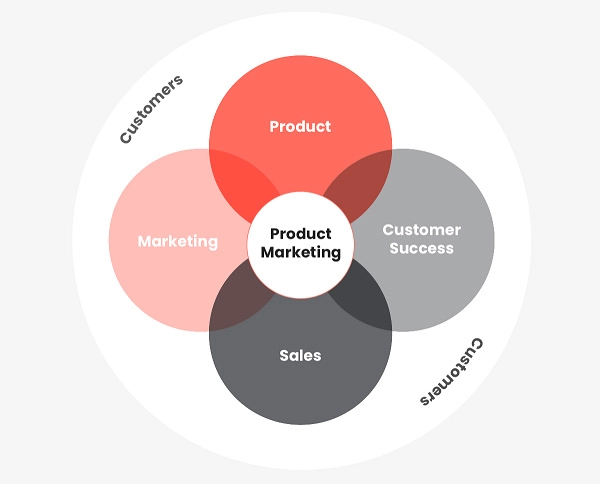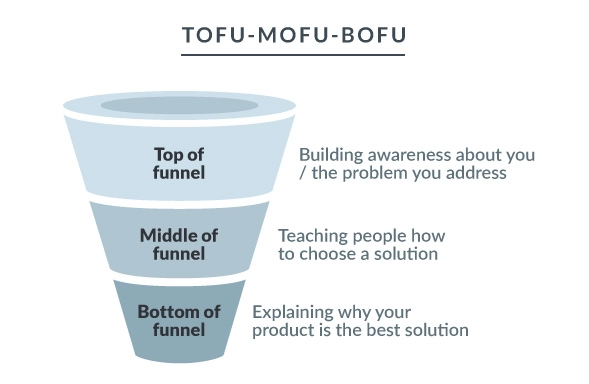
Introduction
You’ve got a great business idea, a website, and a product to sell.
Not sure how to start telling people about your cool new product? That’s where product marketing chips in. So, let’s dive right in.
What is Product Marketing
Simply put, product marketing is the work you do to grow your product. It consists of answering your customers’ questions, providing samples, supporting sales, and generally doing whatever it takes to help the world understand what you make and why they should buy it from you instead of your competitors.
Product marketing begins with a go-to-market strategy. This is the marketing plan for taking your business to market, which will include an evaluation of the potential size of the market, strategies for reaching the target audience, and pricing strategies to maximize profits.

Image Source: productmarketingalliance.com
Why You Should Have a Product Marketing Plan
There’s no doubt that a strong marketing strategy for your product is important in generating leads, wooing customers, and boosting revenue.
Let’s move from the bottom up with an example. Your product team and development engineers have worked together to create an amazing new product. It goes without saying that a lot of effort and money was invested in the project. Everyone in the company is excited about the big launch.
So, on the big day when the product went live, it could not grab enough eyeballs, and the launch was a complete failure.
What do you think went wrong? A likely reason is lesser awareness about your product, or the word did not get out to the right audience with the stipulated time.
Product Marketing is the secret sauce your product development process needs to be successful.
Without it, you’re missing an integral piece necessary for the commercialization of your product after it is developed. Other key benefits include:
- With an effective product marketing strategy, you give people what they need at exactly the right time. You put your product in their line of sight when they are most likely to convert. Customers will see your product as more desirable, which increases your sales opportunities.
- One of the most important functions of product marketing is positioning your brand as one that understands the audience’s needs. This creates a feeling of warmth and engaged empathy with potential and current customers. This is much more likely to result in repeat business than just simply selling a product.
What to Keep in Mind While Making a Product Marketing Strategy
A whopping 80% of new products fail to achieve their business goals. But what about the other 20% of new products? What are they doing differently? How can you replicate their success? We have laid out a few elements for you:
1. Do Not Go Too Far Outside Your Market Perception
A brand that separates itself from a product or service too far from its market’s perception risks that the market will choose a different brand.
For instance, a luxury car maker may decide to sell a top-of-the-line model through a supermarket. People who don’t normally buy luxury cars are likely to purchase the car because they have been convinced that this model is just as good as the lower-end luxury models sold at the dealership.
2. Reach Out to The Public.
When you are almost finished building your new product, get the word out so your customers will be excited when they finally have a chance to try it.
For example, you may give away free copies of your software for a single day or offer a 50% discount code for several weeks before the official release date. You can also create hype on social media with product teasers and more.
3. Invest in Event Sponsorship.
Event sponsorship is one of the easiest ways to market a product. When an event takes place, you get publicity for your brand.
Even though it doesn’t directly get the attention of your desired customer, it indirectly promotes your product to them. That is why event sponsorships are very beneficial to product marketing.
How to Analyze Your Product Market Fit
There is one essential technique for effective entrepreneurship, and it is getting traction in the market. Every other skill follows from this one.
Product market fit is a metaphor. It means: whenever you build something new, you need to find a group of people who will pay for it and who you can build a business around.
It is an important concept for marketers to iterate in the early stages of startup building. Founders should constantly be in touch with their customers, understand how to market a product, and ensure they are not indulging in any extra tasks.
- Find the right target customer according to their needs, wants, and demands.
- Determine what features you need to add to your product so that it solves a problem.
- Figure out your value proposition, i.e., what differentiates your product from the other existing competitors in the market.
- Build your MVP upon four fundamental pillars: functionality, reliability, usability, and delightfulness.
- Create a prototype of your (MVP) and test it against your competitors.
Understanding the Basics of a Product Marketing Plan
So, do you start your product marketing? Let’s find out.
Step 1: Know Who Your Customers Are.
Product marketing is the art of bringing your product to consumers. If you know your audience, you can start to break down who they are and how they interact with their world.
Think about these people as a person, not as a demographic. Do they have a calendar? Do they use reminders? How do they communicate with the world around them?
Step 2: Conduct Through Market Research.
It is a good idea to make a complete spectrum analysis of your competitors in the market. But, do not lose track of what you are up against.
Thorough market research offers insights into various spectrums like product life cycles, distribution channels, pricing models, opportunities for new products, or product improvements.
Step 3: Figure Out Your Product’s Positioning.
What is your product’s positioning in the market? What is the story you’re trying to tell about your product?
The story you tell has to be specific and detailed enough that people will not find it confusing or misinterpret it. You also will need to keep it fresh by updating it as your product evolves.
Step 4: Set Goals for Your Product.
No matter what you’re working on, there are a few broad categories of goals you should set for your product. Your goals will depend on the type of product: Is it a new product? An old one? Does it compete with others in the same space?
Common goals include revenue, customer engagement, market share, brand recognition, and gaining customers from the competition.
Step 5: Set the Price for Your Product.
Whatever you’re selling, you should price it in a way that’s consistent with why it is worth paying for. For example, you can go for competitive vs. value-based pricing.
Competitive pricing is how you decide between two products that do the same thing, but one costs more than the other. For example, if yours is an OTT platform, you’d compare your product to Amazon Prime and Netflix.
Value-based pricing works best when your competitors are so close that nobody can ever tell who’s better. If you can figure out customers’ preferences and show that you offer them something they value at a price that’s low enough to be worth the sacrifice, then the customer will remain loyal to your brand without much fear of switching.
Step 6: Launch Your Product.
At this point, the product is ready to sell. In practice, the CEO usually makes the call to launch it.
Designing the Funnel Strategy for You Product Marketing plan
Here’s a quick breakdown of how to set up an effective product marketing funnel for your business.

Image source: Weidert
1. Top of the Funnel(TOFU): This is the stage where you make customers aware of your product or service and what problem it solves.
2. Middle of the Funnel(MOFU): The goal of this stage is to provide enough value so the user will continue engaging and spend time progressing through your funnel.
3. Bottom of the Funnel(BOFU): A user with high purchase intent reaches this stage. All you need is a gentle nudge like a discount coupon to convert time into buying customers.
Measuring the Results for Your Product Marketing Plan
There are three key quantitative metrics for evaluating your product marketing plan:
Cost per acquisition(CPA): This metric evaluates how much you spend on marketing to attract each new customer. Simply divide the cost of your marketing campaign by the number of conversions.
Customer lifetime value(LTV): It is a measure of how much continuous revenue an active user on your website brings through their use of your product or service.
Conversion rates: It is the number of people who take the action you want divided by the number of actions taken. Conversions can be sales, leads, or signups.
Takeaways for Your Next Product Marketing Strategy
Every startup has a vision of a successful future, and that vision is embodied in a product. No matter how much potential a startup has – no matter how good its idea, how talented its people, or how well-capitalized – it will fail if it doesn’t get traction in the market.
The right product marketing strategy can create the right messaging that clarifies the value of the product in the customer’s eyes.
Is there anything else that we skipped? Please let us know in the comment section below.
Our blog
Latest blog posts
Tool and strategies modern teams need to help their companies grow.

There are various methods to target your ideal customers in programmatic advertising,...

Personalization is the key to digital marketing and SEO success for e-commerce organi...

B2B companies must retain current customers and attract new ones to keep their revenu...



